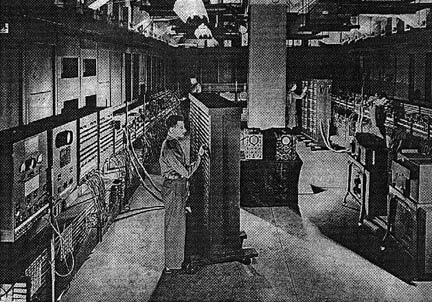Generations of Computers are categorized according to the key technological developments in the history of computer.

• Used vacuum tubes for internal operations
• Used low-Level languages for programming (machine language)
• Used magnetic drums for primary memory.
• Primary memory was limited.
• Heat and maintenance problems were there.
• Used punch cards for input and outputs.
• Input and output was slow.
• e.g. UNIVAC I, EDVAC
Second Generation (1958-1964)
• Used transistors for internal operations.
• Increased use of high level languages.
• Used magnetic cores for primary memory.
• Increased memory capacity.
• Binary coded data were used. (Concept of binary is explained later)
• Increasing processing speed.
• Used magnetic tapes and disks for secondary storage
Third Generation (1965-1970)
• Used (ICs) on silicon chips for internal operations.
• Memory capacity was increased.
• Minicomputers became a common use.
• Software industry emerged.
• Reduction in size and cost of computers happened.
• Increase in speed and reliability.
E.g. HONEY WELL-6000 SERIES
Fourth Generation (1971-today)
• Used Large Scale Integration (LSI) and Very Large Scale Integration (VLSI) for internal operations.
• Development of the microprocessor happened.
• Introductions of micro and super computers.
• Increase in speed, power and storage capacity.
• Parallel processing was introduced.
• Artificial intelligence and expert systems were introduced.
• Robotics was introduced.
• Increased use of Micro/Personal Computers.
E.g. Apple II, IBM PC, Micro Computers
Fifth Generation (1981-1990)
• A project to develop intelligent computers.
• They are computers with artificial intelligence.
• Symbolic manipulation and symbolic reasoning is required.
 ශිල්ප 64
ශිල්ප 64